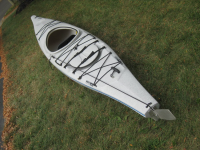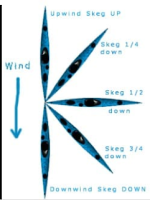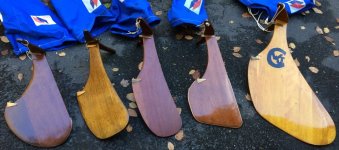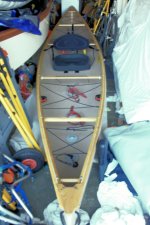- Joined
- Nov 22, 2021
- Messages
- 307
- Reaction score
- 171
I'm thinking of doing something a little crazy. I'm thinking of mounting a removeable skeg on my Esquif Echo solo canoe.
In the world of kayaks, retractable skegs are pretty common and, in my opinion, the greatest thing since sliced bread.
So why don't they have them on canoes? They would have the same advantages on a canoe that they have on a kayak.
If you know of any company that has a canoe with a retractable skeg, please let me know.
I couldn't find a suitable retractable kit, for may canoe, so I had to settle for a removeable one.
It has a base, that I'll have to glue on, and a fin that slides in. Only cost about $12.
Not ideal. I have a removeable skeg, on my IK, and it's a pain in the butt in shallow water. But I wouldn't paddle without it. It improves handling about 500%.
The downside of a retractable would be it takes up valuable floor space and is one more thing to potentially go wrong.
If I mount the removeable and I hate it, I'll be stuck with having the base on the canoe, but that shouldn't be too much of a problem, until I want to sell it.
Something to play with.
In the world of kayaks, retractable skegs are pretty common and, in my opinion, the greatest thing since sliced bread.
So why don't they have them on canoes? They would have the same advantages on a canoe that they have on a kayak.
If you know of any company that has a canoe with a retractable skeg, please let me know.
I couldn't find a suitable retractable kit, for may canoe, so I had to settle for a removeable one.
It has a base, that I'll have to glue on, and a fin that slides in. Only cost about $12.
Not ideal. I have a removeable skeg, on my IK, and it's a pain in the butt in shallow water. But I wouldn't paddle without it. It improves handling about 500%.
The downside of a retractable would be it takes up valuable floor space and is one more thing to potentially go wrong.
If I mount the removeable and I hate it, I'll be stuck with having the base on the canoe, but that shouldn't be too much of a problem, until I want to sell it.
Something to play with.





